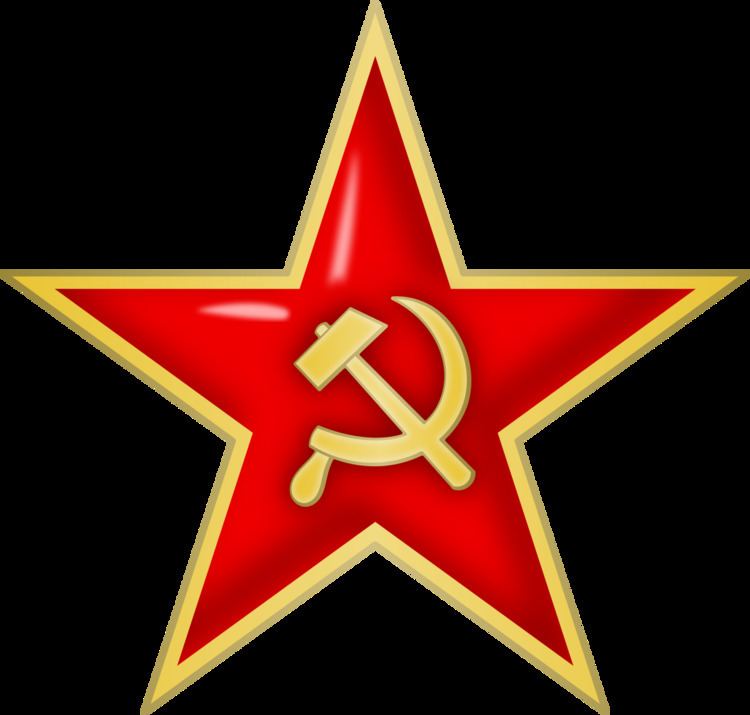Country Soviet Union Size Army | ||
 | ||
Active 9 December 1942 – December 1946 Part of Stalingrad FrontSouthwestern Front4th Ukrainian Front3rd Ukrainian Front1st Belorussian Front3rd Belorussian FrontGroup of Soviet Occupation Forces in Germany Engagements Battle of StalingradRostov operationsLiberation of Left Bank and Right Bank Ukraine,Jassy–Kishinev OffensiveVistula–Oder OffensiveBattle of Berlin | ||
The 5th Shock Army was a Red Army field army of World War II. The army was formed on 9 December 1942 by redesignating the 10th Reserve Army. The army was formed two times prior to this with neither formation lasting more than a month before being redesignated.
Contents
Formation
The 5th Shock Army was formed on December 8, 1942, based upon the headquarters of the 10th Reserve Army, which was assigned to the Reserve of the Supreme High Command at the time. It was formed within Stalingrad Front, and was brought together in the remarkably short span of four days (December 9 - 12). Its first commanding officer was Lt. General M.M. Popov. The composition of the army on formation was:
After the German 6th Army was encircled at Stalingrad it was apparent to both sides that there were two possible routes that a German relief operation could follow: from the west from the area of the confluence of the Don and Chir Rivers; or from the southwest from the area around Kotelnikovo. As the distance from the west was significantly shorter than from the southwest, 5th Shock was formed specifically to counter the former threat, which it successfully carried out over the next two weeks.
1942–43
Assigned to the Stalingrad Front, on 26 December 1942 the unit participated in Operation Saturn. Its composition on 1 January 1943 was as follows:
4th Guards Rifle Division258th Rifle Division315th Rifle Division5th Destroyer Brigade3rd Guards Cavalry Corps274th Howitzer Artillery Regiment331st Howitzer Artillery Regiment1162nd Gun Artillery Regiment507th Tank Destroyer Regiment764th Tank Destroyer Regiment21st Guards Mortar Regiment1068th Anti-aircraft Artillery Regiment (2nd Anti-aircraft Artillery Division)258th Engineer Battalion827th Engineer BattalionTransferred to the new Southern Front (the former Stalingrad Front), the army took part in the Salsk-Rostov Offensive as part of the 4th Ukrainian Front. In August 1943, it finally succeeded in breaking through the German Mius-Front defensive line on the river Mius, after which it participated in the Melitopol Offensive during the Battle of the Dnieper.
On 1 August 1943, the army was composed of the following formations:
31st Guards Rifle Corps96th Guards Rifle Division126th Rifle Division127th Rifle Division221st Rifle Division315th Rifle Division1st Guards Destroyer Brigade506th Gun Artillery Regiment1162nd Gun Artillery Regiment331st Howitzer Artillery Regiment8th Anti-tank Artillery Brigade15th Anti-tank Artillery Brigade491st Tank Destroyer Regiment507th Tank Destroyer Regiment489th Mortar Regiment15th Anti-aircraft Artillery Division1617th Anti-aircraft Artillery Regiment32nd Guards Tank Brigade22nd Separate Guards Tank Regiment28th Armored Train Battalion43rd Special-Designation Engineer Brigade258th Engineer Battalion827th Engineer Battalion1944
In 1944, as part of the 3rd Ukrainian Front, the army took part in the liberation of the Right-Bank Ukraine and in the Jassy–Kishinev Offensive. On 1 August 1944, the unit consisted of the following formations:
10th Guards Rifle Corps32nd Rifle Corps248th Rifle Division266th Rifle Division44th Guards Gun Artillery Brigade92nd Corps Artillery Regiment507th Tank Destroyer Regiment521st Tank Destroyer Regiment489th Mortar Regiment1617th Anti-aircraft Artillery Regiment61st Engineer-Sapper BrigadeIn early September the army was transferred to the Reserve of the Supreme High Command, relocated to the area of Kovel, in Ukraine, and on 30 October 1944 it was transferred to the 1st Belorussian Front.
1945
In 1945, the army took part in the Warsaw-Poznan Offensive and Berlin Strategic Offensive operations. During the final assault on Berlin the army was heavily reinforced and composed of:
Post war occupation
The army took part in the Berlin Victory Parade of 1945. The 5th Shock Army was then assigned occupation duties in eastern Germany and was responsible for securing the Berlin area. When the Group of Soviet Occupation Forces in Germany was formed the army was composed of:
The army was disbanded in December 1946.
